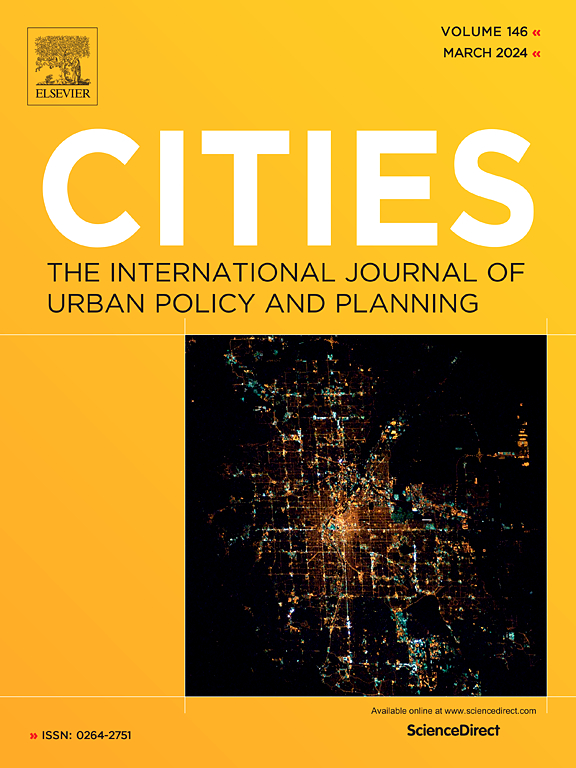Psycho-behavioral responses to urban scenes: An exploration through eye-tracking
IF 6
1区 经济学
Q1 URBAN STUDIES
引用次数: 0
Abstract
Reflected through a series of objective and subjective perceptions, the built environment in an urban area plays a significant role in shaping human well-being. While previous studies have mostly focused on the positive effects of urban green spaces drawing from observational or subjective metrics, it is evident that other urban elements, such as the presence of mismanaged trash can also play a major role in shaping various aspects of human well-being. This paper focuses on the conscious and unconscious (through eye-tracking) effects of the presence of construction sites, recreational vehicles (RVs), and trash within urban settings on people's self-reported stress, valence, and arousal, as well as perceptions of social disorder, social cohesion, danger, and desirability of different neighborhoods. Our results indicate the adverse effect of the presence of such elements on well-being and urban perception metrics measured through standard questionnaires and eye-tracking, with trash having the highest adverse impact. Additional results from eye-tracking analysis reveal that participants spend more time viewing the area of the image with trash, consistent with their self-reported ratings. Our results highlight the spectrum of conscious and unconscious effects of the built environment on human well-being and help quantify such effects.
对城市场景的心理行为反应:通过眼动追踪进行探索
通过一系列客观和主观感知,城市建筑环境在塑造人类福祉方面发挥着重要作用。虽然以往的研究大多集中在城市绿地的积极影响上,并以观察或主观指标为依据,但其他城市元素,如存在管理不善的垃圾,显然也会在塑造人类福祉的各个方面发挥重要作用。本文重点研究了城市环境中建筑工地、休闲车(RV)和垃圾的存在对人们自我报告的压力、情绪和唤醒,以及对社会混乱、社会凝聚力、危险性和不同社区可取性的感知的有意识和无意识(通过眼动追踪)影响。我们的研究结果表明,这些因素的存在对通过标准问卷和眼动跟踪测量的幸福感和城市感知指标有不利影响,其中垃圾的不利影响最大。眼动跟踪分析的其他结果表明,参与者会花更多的时间来观察图片中的垃圾区域,这与他们的自我评价是一致的。我们的研究结果强调了建筑环境对人类福祉的有意识和无意识影响,并有助于量化这些影响。
本文章由计算机程序翻译,如有差异,请以英文原文为准。
求助全文
约1分钟内获得全文
求助全文
来源期刊

Cities
URBAN STUDIES-
CiteScore
11.20
自引率
9.00%
发文量
517
期刊介绍:
Cities offers a comprehensive range of articles on all aspects of urban policy. It provides an international and interdisciplinary platform for the exchange of ideas and information between urban planners and policy makers from national and local government, non-government organizations, academia and consultancy. The primary aims of the journal are to analyse and assess past and present urban development and management as a reflection of effective, ineffective and non-existent planning policies; and the promotion of the implementation of appropriate urban policies in both the developed and the developing world.
 求助内容:
求助内容: 应助结果提醒方式:
应助结果提醒方式:


